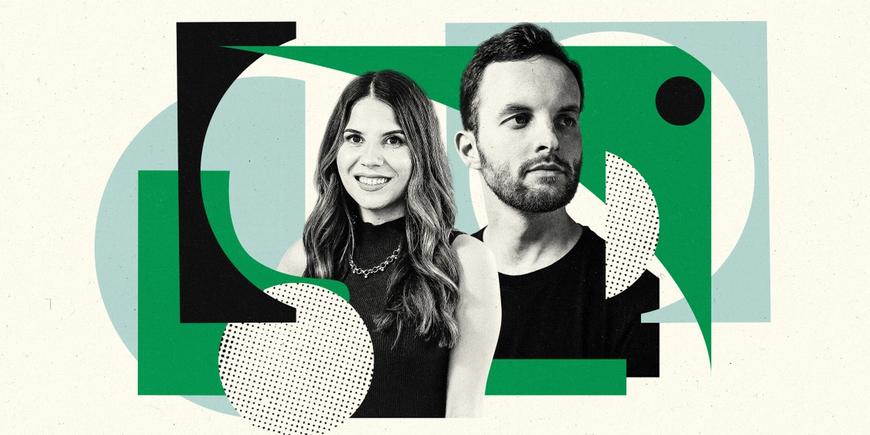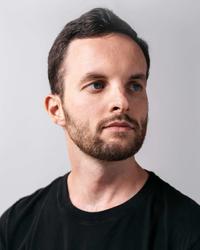Wheel CEO Michelle Davey: ‘COVID Has Blown the Lid Off the Possibilities of Virtual Care'
Michelle Davey grew up sick, without access to adequate doctors. Now, with a focus on supporting clinicians and partners, the telehealth CEO aims to bring quality healthcare to everyone.

Even before the pandemic, clinician burnout was a very real problem: Healthcare workers have the highest rate of suicide in the U.S., over active military.
This is one of the many important reasons Wheel, a health tech company that provides companies and clinicians with everything they need to deliver care virtually, is prioritizing the way they support clinician work and training.
“I think we're at the point where it's morally unjust towards the clinician base,” Wheel CEO and Cofounder Michelle Davey says.
“We need to think about how the ecosystem treats the workforce. How do we enable a burned-out workforce to have the flexibility that we're all seeking?”
I interviewed Michelle to learn more about what drives her, her path to scaling Wheel, and how she aligns incentives for better outcomes.
What’s your background and what got you interested in healthcare?
My healthcare origin story started from a really young age. I was sick as a child. I spent a lot of time in the doctor's office, and being shuttled from rural Texas to Austin. I grew up in a rural part of Texas, and I went undiagnosed with an autoimmune condition for over 15 years because my town lacked access to quality medical care. I would carry a red binder with all of my lab tests and patient records around from doctor to doctor. Fifteen years of not finding an answer is what drove me to want to fix healthcare.
For people who aren't familiar with Wheel, what's the problem that you're solving and what are the products that you offer?
When we think about our vision, it's really to enable high quality healthcare access to everyone, first from a geographical standpoint. Second, from a socioeconomic standpoint—lowering costs for the patient and the companies, since a lot of wasteful spend gets passed along to the patient. And lastly, providing access to the right clinician at the right time.
When we first set out to help patients access clinicians, we built an underlying routing and load-balancing technology that matches patients to a clinician. Our algorithms match on over 12 different attributes to ensure that the patient is getting the right provider. And then our load-balancing technology allows us to do that across all 50 states. Now our average patient wait times across the U.S. for asynchronous and synchronous care are under two minutes.
The vision of you guys being able to actually own that network is pretty amazing.
Yes! And there's different flavors of how our partners work with Wheel. It could be Wheel is 100% in the network. Sometimes we're augmenting the network for gaps in coverage. Sometimes they have a core base of clinicians to handle demand, and then Wheel offers everything on top of that. Oftentimes now, we're moving companies from point-of-care solutions to much broader platform experiences.
What were some of the early sales processes?
We started selling into digital health in 2018, and this was our primary market. It took a lot of convincing, but this was really where we had to start. I think first and foremost, we knew we could build innovative technology quickly in the digital health ecosystem. Since the pandemic, we've been bringing that innovation into large enterprises, into more traditional healthcare, and into companies who are looking to enter healthcare.
Now we're also building deeper into healthcare with reimbursement pathways and things that enable scale—whether you're a D2C cash-pay company looking to go into reimbursement, or a health plan looking to add a virtual front door and D2C testing. This can look very different from one type of company to the next. But the need for the backend, the clinical infrastructure and the clinicians will always be needed. And that's really the Wheel value proposition.
When you started to shift more towards that traditional enterprise side of the house, what was the ROI case that you had to make?
One of the most important reasons we've been successful in our sales strategy is that we truly align our incentives with our partners. We've prioritized educating our market and our partners on virtual care, telehealth, and what's happening in the ecosystem.
Unlike traditional sales where you're just trying to push it through the funnel, we're educating them from the very beginning. How do they build for long term viability versus just building something in a pilot ecosystem?
The other reason is we've built a business model that scales with our customers. We’re thinking about how we enable customers to go from point-of-care solutions to much larger platforms, and how we build our incentives as a business to scale along with our partners, versus one over the other.
Then lastly, we haven't had an ego to own the patient brand. We have prioritized making sure our partners look great to their patients and are delivering the highest quality care in the industry. We don't have to take that on as a brand.
I know you are starting to spend more time on longitudinal care. What will Wheel look like in a few years and how do you help drive those sorts of interactions?
I think the thing that's important when thinking about longitudinal care, and in all care in this country, is that 100% of care is delivered on the back of the clinician. Here at Wheel, we think about building technology to enable clinicians to reach more patients, but reach them in a way that they see fit.
COVID has blown the lid off the possibilities on different use cases of virtual care. Most of the country isn't just looking for point-of-care solutions. How do we start to think about building longitudinal care for primary care, for mental health, for chronic care conditions, and supporting patients through their care journey? One patient may have multiple care journeys at any given time. So how do I get that care at different times through different care pathways? What we've done here at Wheel is build the episodic care and urgent care pieces. Then as the pandemic hit, we started to think about longitudinal care.
As you said, medical care and telehealth is ultimately built off the back of providers. Clinical shortages, provider burnout—this was a problem before COVID started, but it has been thrust onto the center stage. For someone who spends so much time in this world, how do we start solving this problem?
I think it's really unfortunate to see the high levels of clinician burnout. We were already experiencing high levels of burnout pre-pandemic, with healthcare having the highest rate of suicide over active military. That's insanity. I think we're at the point where it's morally unjust towards the clinician base, and we need to think about how the ecosystem treats the workforce. How do we enable a burned-out workforce to have the flexibility that we're all seeking? We’re building tech that enables clinicians to have seamless experiences, because we believe happy and healthy clinicians drive positive patient experiences.
Lastly, how do we unlock different levels of providers in healthcare? A lot is done on the backs of certain types of clinicians, especially in telehealth. How do we empower and support them by scaling their educational programs, unlocking a different level of provider, and allowing them to practice at the top of their license?
Why has Austin been the right place for you to build Wheel, other than the weather?
In the early days, it allowed us to be on each coast—whether it was New York or San Francisco or Boston—and to be on the ground with our clients and our partners. It allowed us to put our heads down and build. It allowed us to not be pulled in either direction that the market was going, because quite frankly, what we were building back in 2018 didn't fit the market of 2018. It fits in the market of today. And we're building that next generation and continuing to look towards the future. Now I think building in Austin is kind of a no-brainer.
